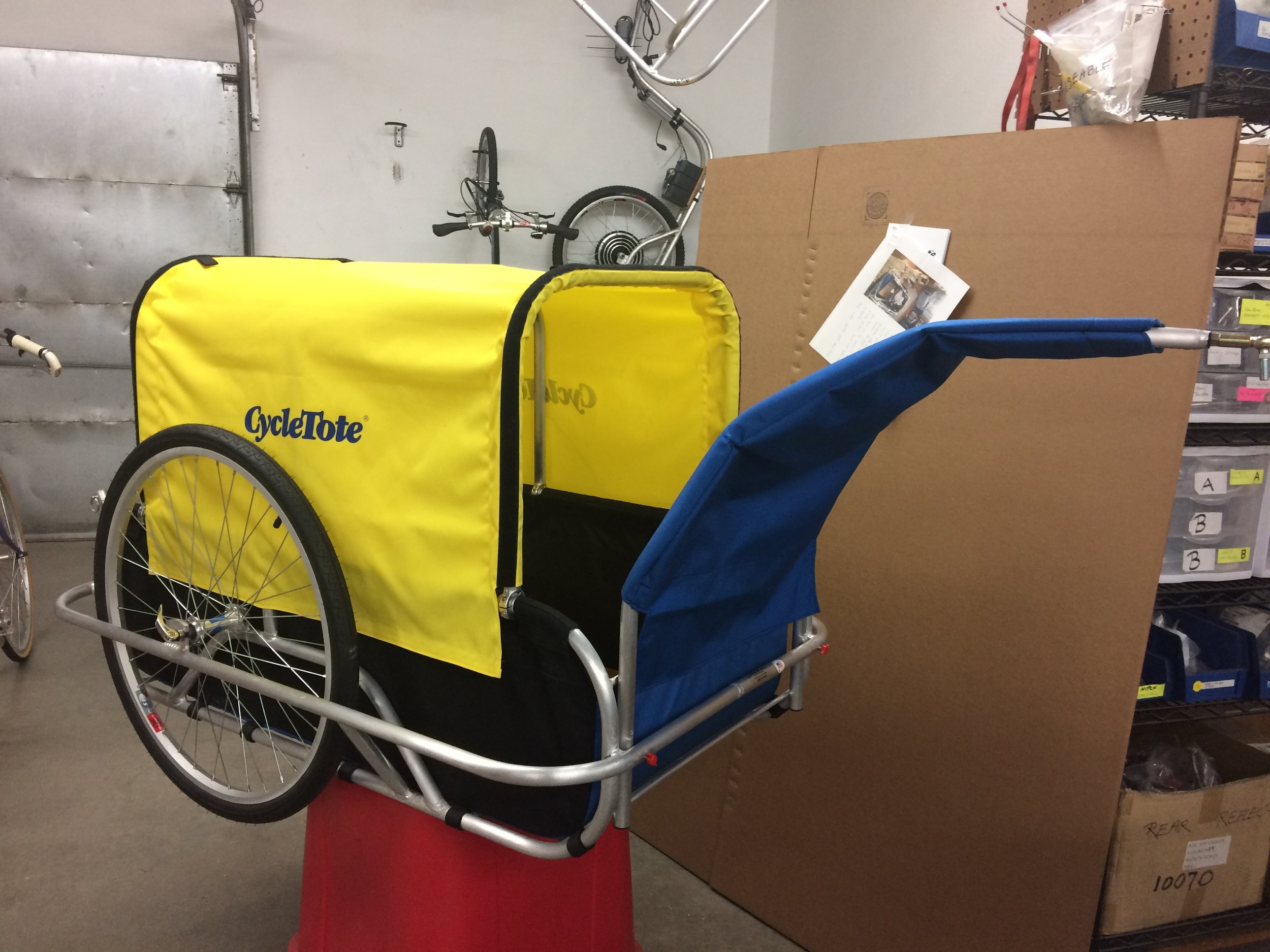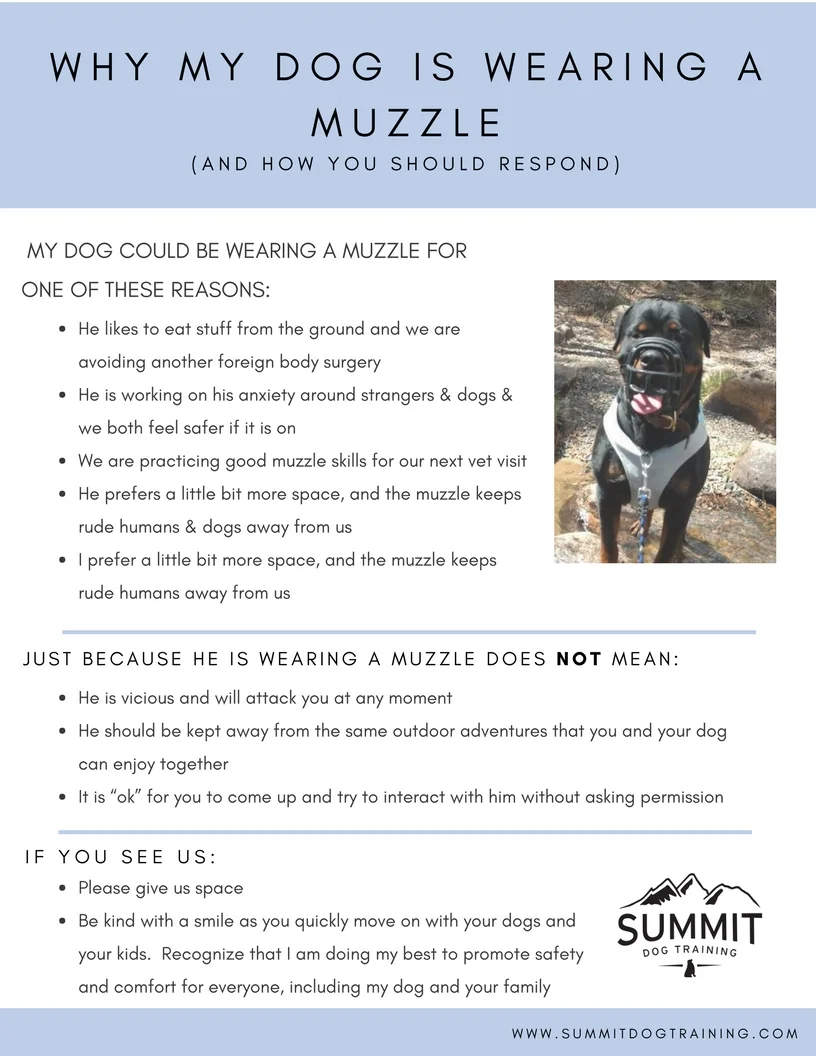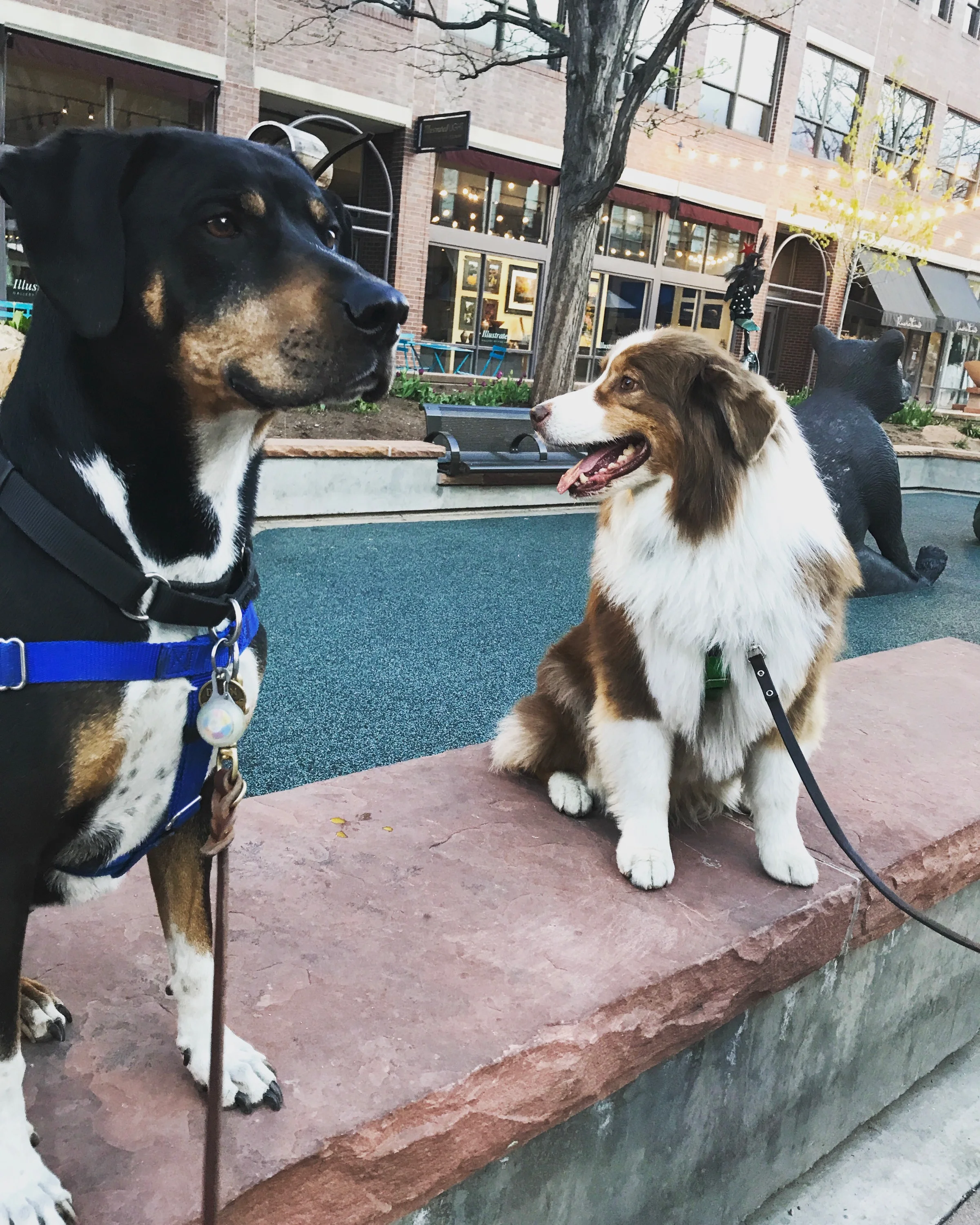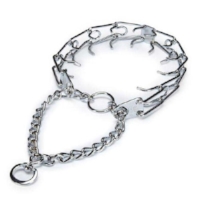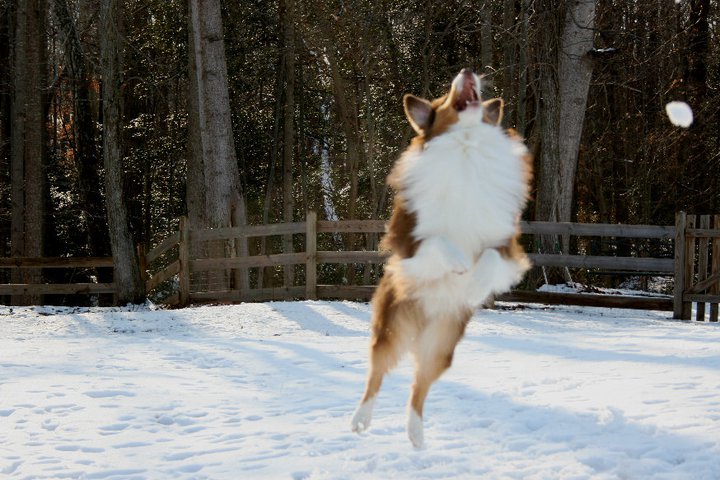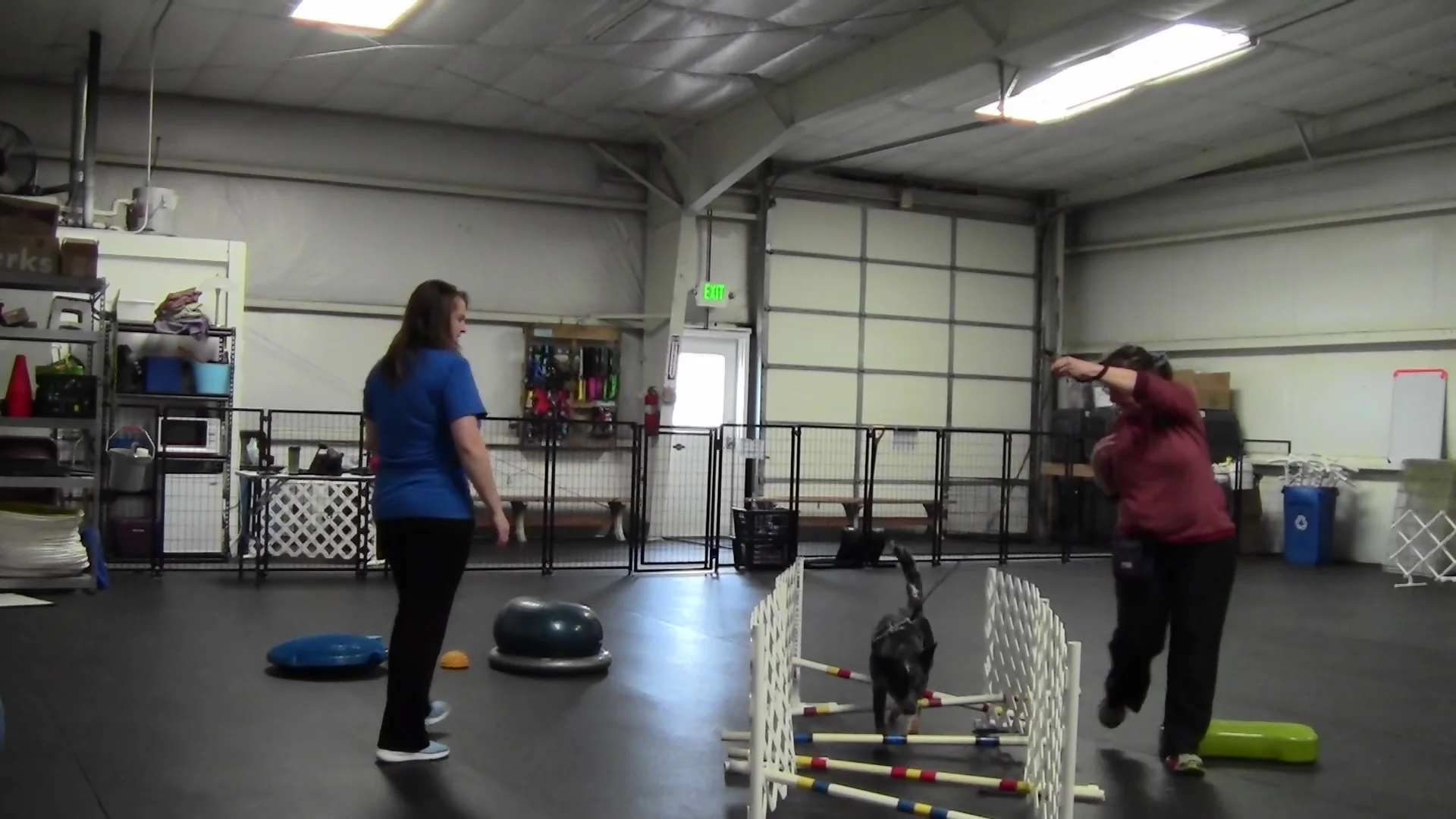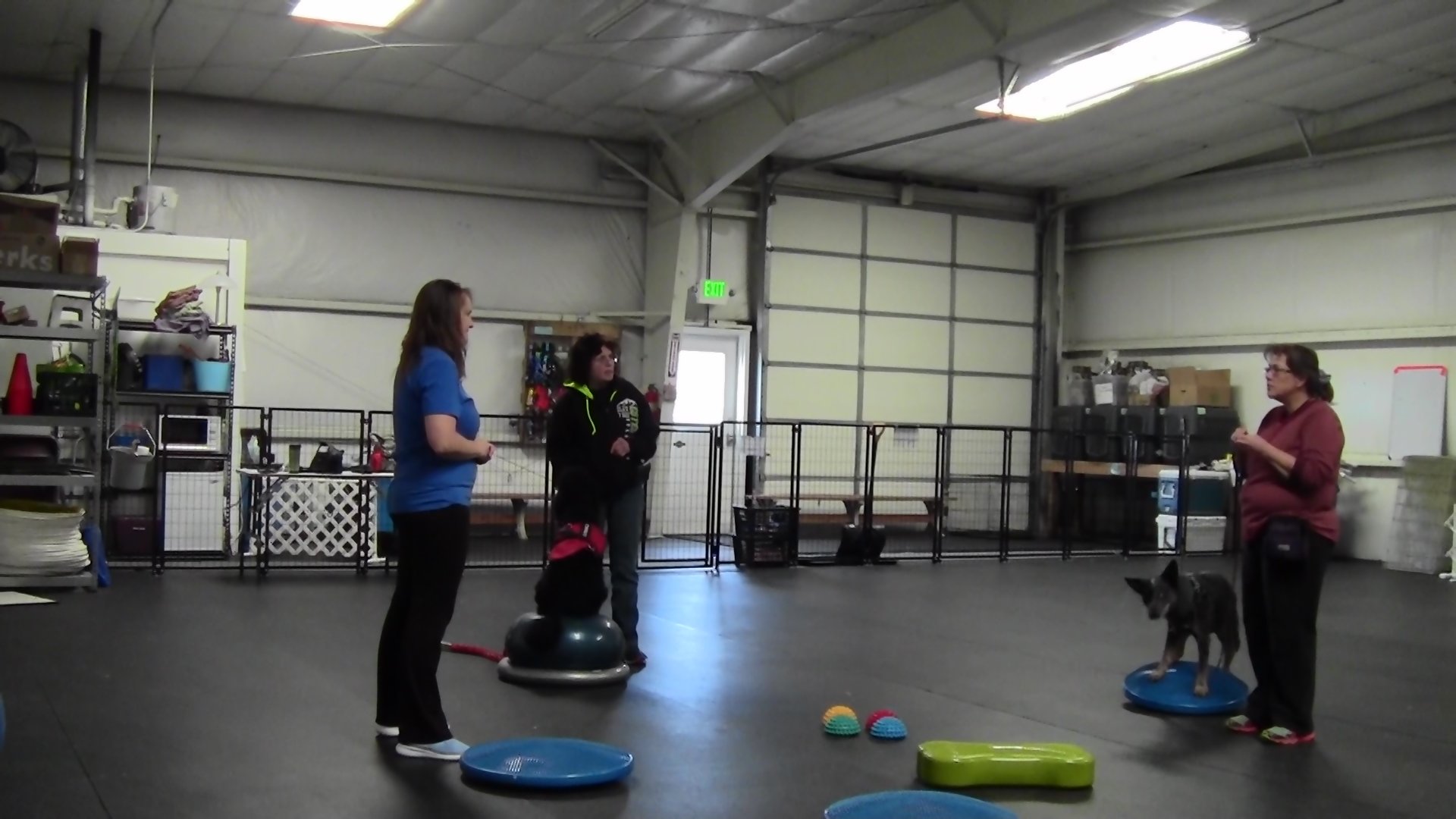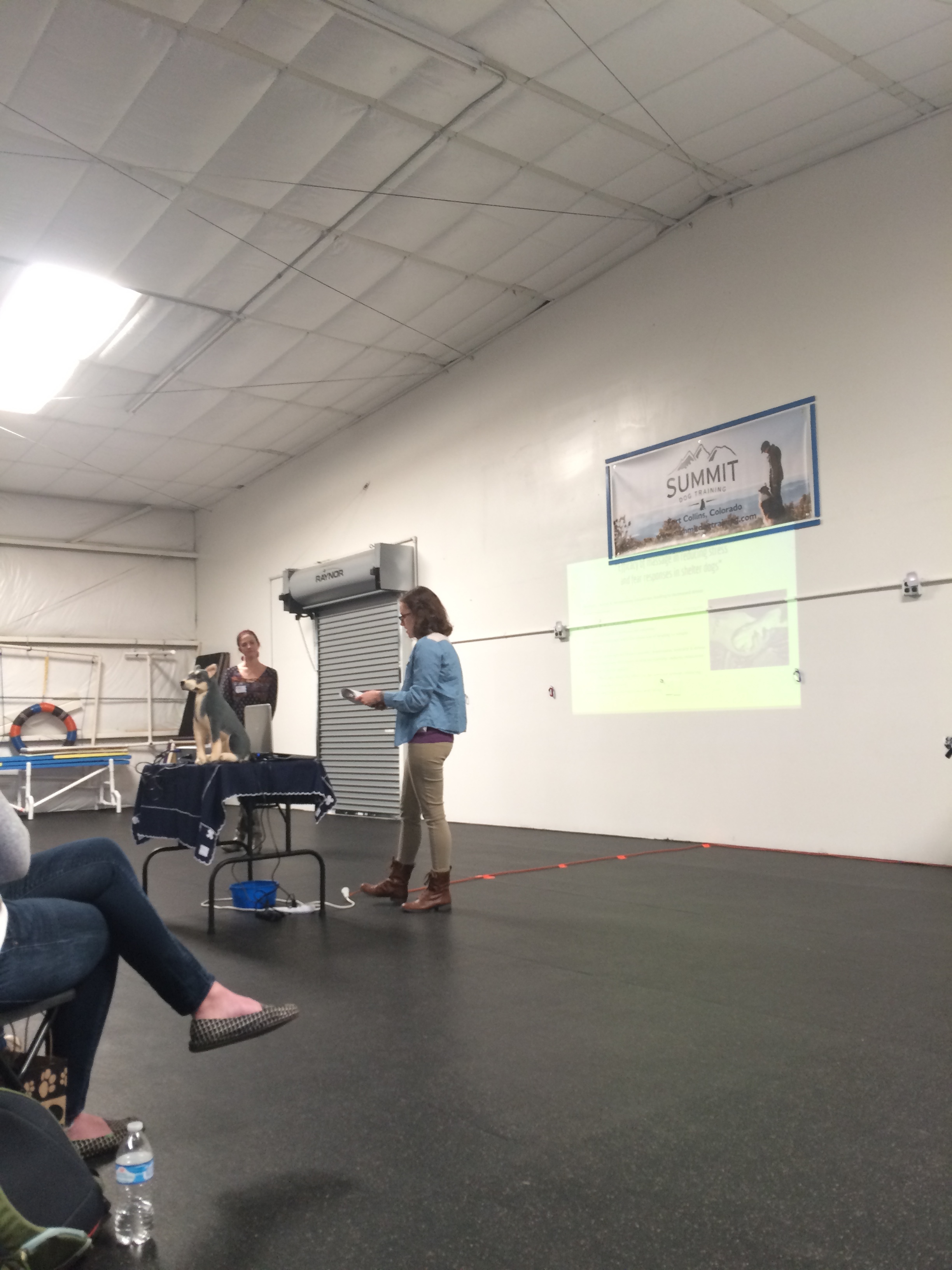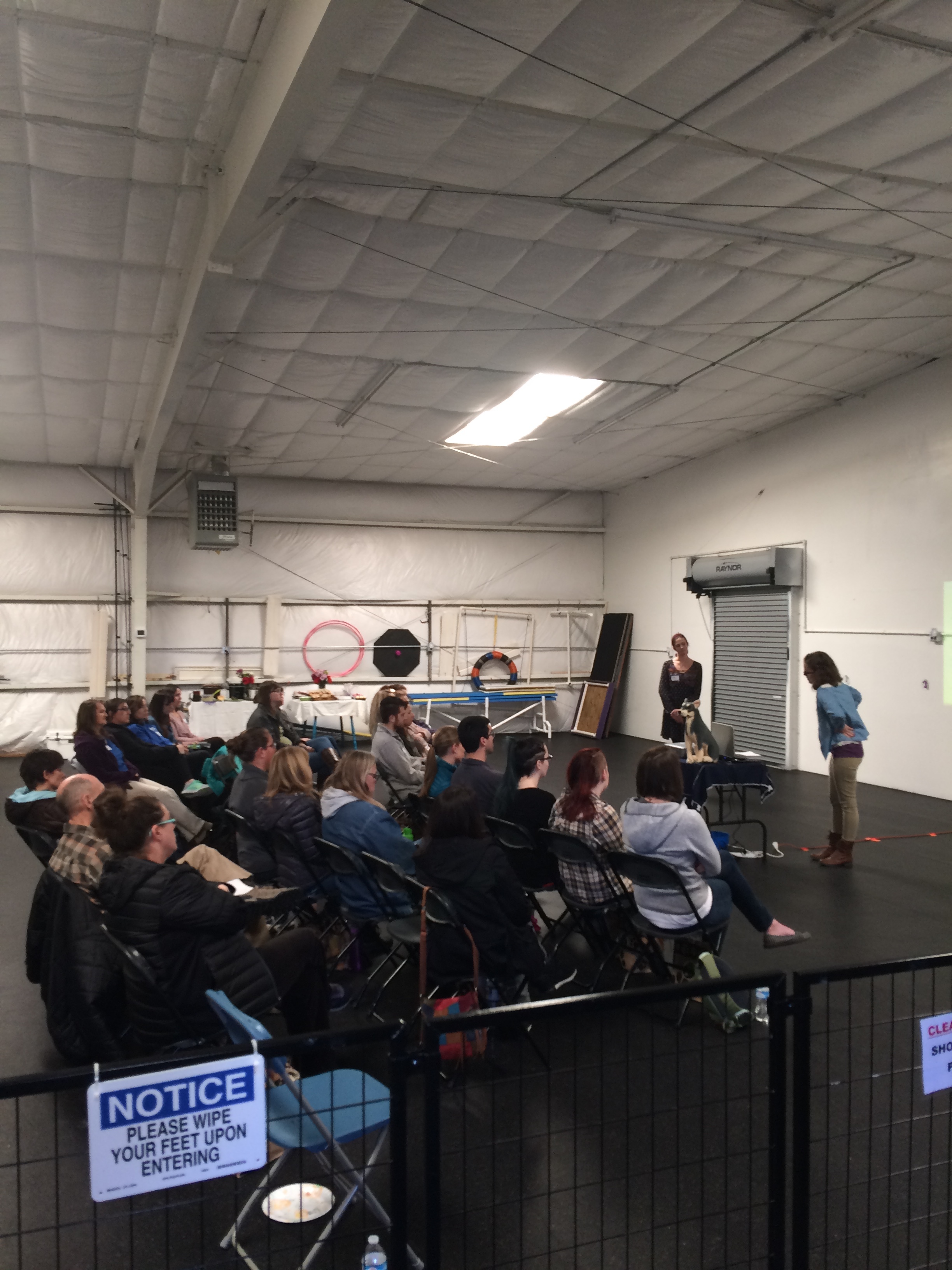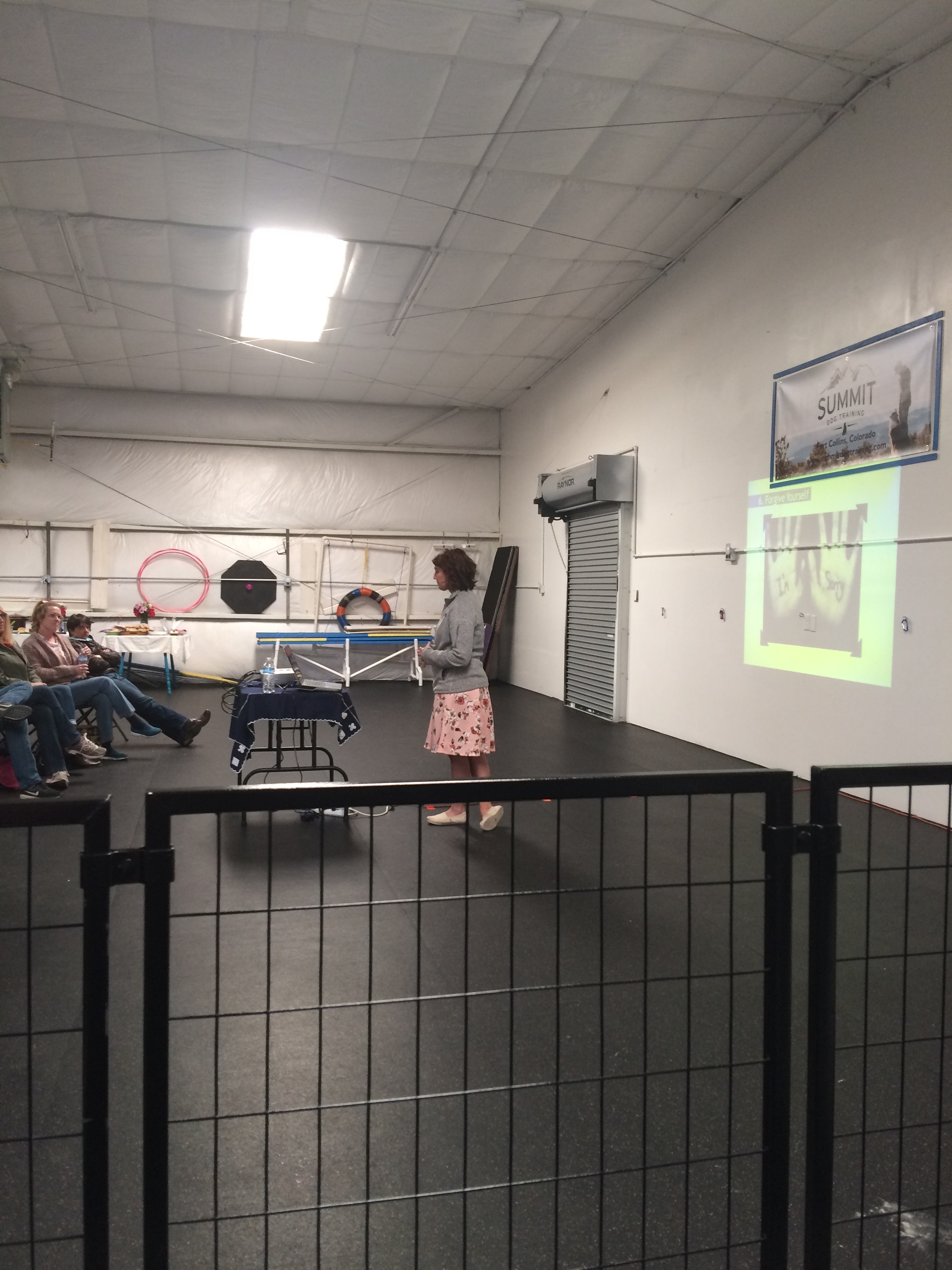There's nothing quite as cool as biking with your dog, especially in a town like Fort Collins with a fantastic obsession with both bikes and dogs.
Roo loves biking adventures!
There are several different ways that your dog can participate with you on your bike ride, including (but I'm sure not limited to - bike creativity knows no bounds here) perching in a basket, keeping pace alongside, pulling you out in front (hope you have good brakes!), or riding behind in a trailer. The first or last options are great for dogs that can't go as fast or as far, or during the months when it is too hot for their paw pads to be on the pavement.
A few weeks ago, I sat down with Sue Whetton, owner of CycleTote Bicycle Trailers to chat about dogs and bike trailers and how those two things fit together! Sue gave me a tour of their production space and explained a little bit about the process of making bike trailers, which was really cool!
Although CycleTote makes bike trailers for all sorts of needs, according to Sue, the CycleTote bike trailer designed specifically for dogs is their best seller. No surprise there! We know that several of our 4-legged students love their CycleTote trailers!
Casper the Cattle Dog, on one of his first adventures in his CycleTote trailer!
June Bug loves to ride in the trailer!
In order to facilitate a peaceful bike & trailer ride for both you and your dog, there are a few things to consider.
Roo practiced relaxing in his trailer before it got attached to the bike. Our trailer isn't as cool as Casper & June Bug's . . . we hope to upgrade soon!
One of the most important elements of successful trailer-riding with your dog is getting your dog used to being in the trailer long before it starts moving. Sue explained that many of their customers turn the trailer into a bed for their dogs first, simply by taking the wheels off and leaving the trailer in their living room for a few weeks. This allows the dog to learn how to get in and out of the trailer safely, as well as associate the trailer with relaxing, which can be a big help when adding in the biking element!
The second element that prepares your dog up for a successful trailer ride is the stability and safety of the trailer set-up. Many bike trailers that we try to utilize for our dogs were originally designed for children or cargo, and so may not have the most secure set-up to make our dogs feel comfortable. With the right modifications, many of these bike trailers could become great doggie-chariots, but here are a few things to consider:
- A secure attachment point is an essential safety feature. No matter how much your dog loves the trailer and "would NEVER jump out," there is no reason to risk your dog's safety by having them ride "unbuckled." CycleTote trailers have several options for connecting your dog, although the most popular option is to a strap coming up from the floorboard.
- A sturdy cover can be a big help if you plan to do a lot of riding in peak sunshine. Our dogs can get sunburned and overheated even just riding in a trailer if the conditions aren't optimal.
- A fender or other covering of some kind can help keep rocks and dirt from getting in your dog's face as you ride. CycleTote uses detachable fenders-sheaths like the blue one above - it slides over the bars connecting the trailer to the bike seat post.
As far as training your dog or puppy to ride in the trailer, once they have acclimated to settling in the trailer while it is stationary, you can start adding in movement little by little. Go at your dog's pace - some dogs are naturals who take to the experience right away, while others may take a little more time to get comfortable with the ride. Check out the downloadable handout below for some additional strategies and tips on making your ride with your dog as smooth as possible!
A special thanks to Sue at CycleTote for sharing her bike trailer wisdom with us!
Click here to download this handout!







